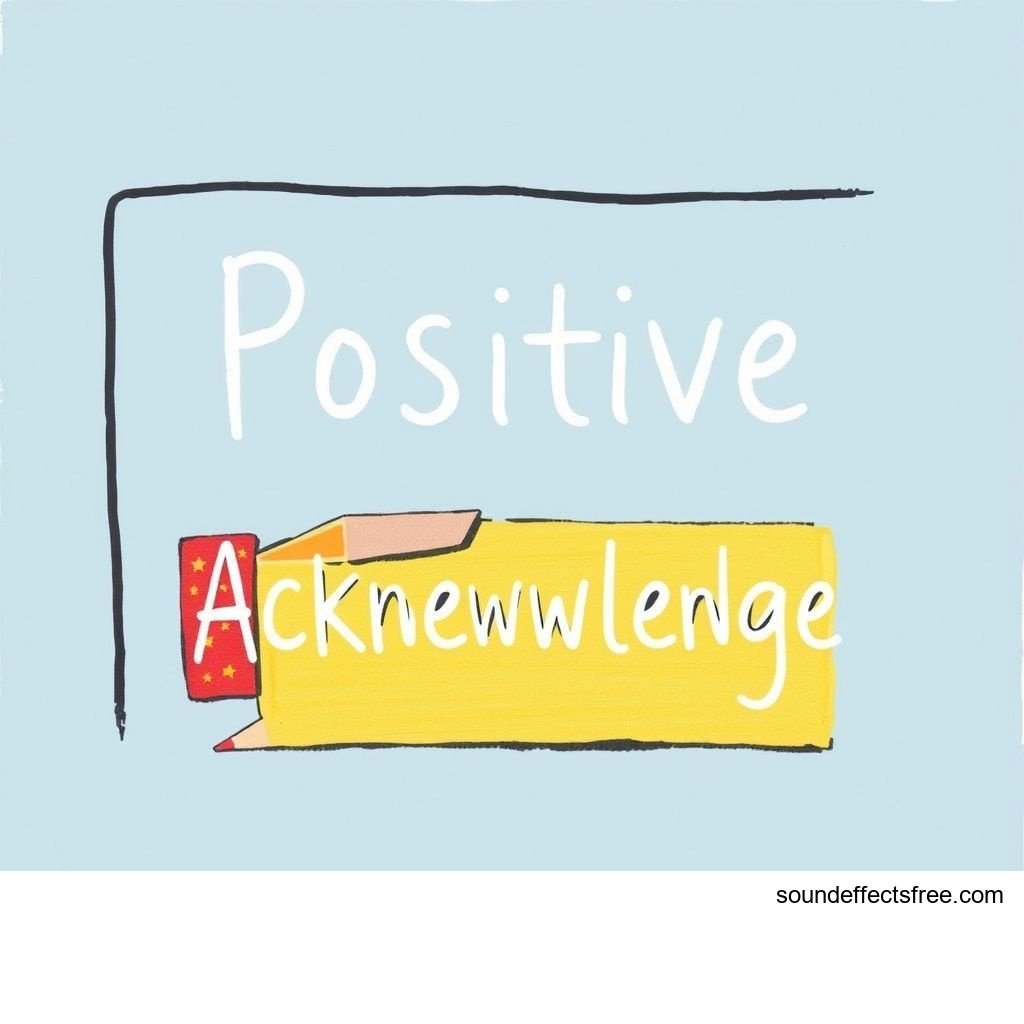Gentle Alert Tone: Non-Intrusive Notification Sounds
Discover the power of a gentle alert tone. Learn to create subtle, non-intrusive notification sounds for enhanced user experience. Explore audio effects.
A gentle alert tone offers a refreshing alternative to harsh, jarring notifications. It enhances user experience significantly. This subtle audio effect provides necessary information without disruption. Modern interfaces increasingly demand this considerate approach. Users prefer a notification sound that respects their focus. A truly gentle sound blends seamlessly into the background. It only draws attention when needed. This article explores the art and science of creating such sounds. We will delve into their applications and technical aspects. Crafting a gentle alert involves careful design. It is more than just turning down the volume.
Applications in Media
The demand for non-intrusive sounds spans many industries. A gentle tone is often preferred. It prevents user fatigue. This approach improves overall satisfaction.
Industry-Specific Uses
In healthcare, a gentle notification is critical. Medical devices need soft alerts. These alerts must not startle patients or staff. Imagine a gentle chime for medication reminders. It preserves a calm environment. Smart home systems also benefit. A subtle alert for a package delivery is perfect. It informs without startling residents. Even car dashboards use softer sounds. This maintains driver concentration. Gaming applications use gentle feedback. A gentle sound for collecting an item is less distracting. This enhances immersion. Educational software uses gentle cues. They guide learners without interruption. The goal is always a smooth, pleasant experience.
Creative Techniques
Sound designers use various methods. They create truly gentle audio. One technique involves careful envelope shaping. A slow attack and quick decay can make a sound feel very gentle. Using natural, organic samples often helps. Think of soft bell tones or water droplets. A gentle synth pad can also achieve this. Subtle layering adds complexity. Yet it maintains the gentle quality. Pitch modulation can add softness. Applying a touch of reverb creates space. This makes the sound less direct. The overall effect is a more ethereal and gentle presence. The aim is always comfort. Related gentle sounds offer more inspiration.
Technical Analysis
Understanding sound properties is key. It helps in creating a gentle alert. Every sound has specific characteristics. These define its impact.
Waveform Characteristics
A gentle sound often has a smooth waveform. Sharp peaks and sudden changes are avoided. This translates to a soft attack. The sound slowly rises to its peak volume. It then decays smoothly. A short sustain phase is common. This prevents the sound from lingering too long. A well-designed gentle waveform is clean. It lacks harsh transients. This ensures a pleasant listening experience. The amplitude envelope plays a crucial role. Shaping it correctly ensures the desired gentle effect.
Frequency Profile
The frequency content also defines a gentle tone. Sounds with dominant mid-range frequencies tend to be softer. Harsh high frequencies are minimized. They can be piercing. Very low frequencies can feel intrusive. They create a rumble. A good gentle sound occupies a comfortable frequency range. It avoids extremes. Filtering out unwanted frequencies is essential. A low-pass filter can soften bright sounds. This creates a more subtle and gentle output. Understanding the psychoacoustics helps. We perceive certain frequencies as more soothing. This is vital for a truly gentle notification.
Production Tips
Crafting a gentle alert requires specific production techniques. Attention to detail is paramount.
Recording & Editing
Start with high-quality source material. Clean recordings are crucial. Any background noise can ruin a gentle sound. Use a quiet recording environment. Consider recording real-world gentle sounds. Examples include soft chimes or plucked strings. During editing, apply subtle noise reduction. Avoid over-processing. Excessive compression can make a sound harsh. Use gentle EQ to shape the tone. Remove any resonant peaks. This ensures the sound remains gentle and pleasant. Trim the start and end precisely. A clean start and fade out are essential.
Software Tools
Digital Audio Workstations (DAWs) are indispensable. Tools like Ableton Live, Logic Pro, or FL Studio offer powerful features. Plugins are also vital. Reverb plugins can add space and softness. Look for algorithms that create natural decays. Delay plugins, used sparingly, can create a soothing echo. EQ plugins help sculpt the frequency response. Consider using granular synthesis. It can break sounds into tiny grains. This creates unique, ethereal textures. A gentle synth patch can be a great starting point. Experiment with soft attack and decay settings on your synth. Virtual instruments often come with presets. Many of these offer a gentle starting point. Explore these options for a truly subtle audio effect.
Creative Implementation
Beyond basic production, creative techniques enhance a gentle sound. They add depth and character.
Layering Methods
Layering different gentle sounds can create richness. Combine a soft sine wave with a subtle bell. Or try a delicate wind chimes sample. Ensure each layer is gentle on its own. The combined effect should still be gentle. Adjust individual volumes carefully. Balance is key. One sound should not overpower another. This creates a complex yet subtle notification sound. The goal is cohesion. Each layer contributes to the overall gentle aesthetic. This makes the audio effect more unique.
Spatial Effects
Spatial effects make a sound feel open and less direct. Reverb is a primary tool. A short, natural reverb can give a gentle sound air. It creates a sense of space. Long, decaying reverbs can be too distracting for alerts. Modulate the reverb tail slightly. This adds organic movement. Delay effects can also work. Use a single, short delay. Make it very low in the mix. This provides a sense of depth. Panning can add gentle movement. Slowly pan a gentle sound from left to right. This creates a pleasant, ambient feel. Such sfx are truly immersive.
Sound Pack Integration
A gentle alert tone often fits into larger sound libraries. It complements other design elements.
Using with Other Sounds
A gentle tone can serve as a primary notification. It can also precede a more prominent sound. Imagine a gentle chime before a critical alert. This prepares the user. It creates a sense of progression. Pairing a gentle sound with a UI Confirm Tap can enhance feedback. This pairing reinforces actions. The gentle nature ensures consistency. It maintains a calm user interface. These sounds work well in combination. They form a cohesive audio experience. The gentle element sets the overall mood.
Complete Collection
A vast library of high-quality sound effects is invaluable. Pro Sound Effects offers extensive collections. They provide a range of professional audio effect libraries. A sound designer's toolkit benefits greatly from such resources. They ensure access to diverse sound sample options. These include many gentle tones suitable for various projects.
Get the full sound pack for comprehensive audio solutions.
FAQ Section
Q1: What defines a gentle alert tone?
A gentle alert tone is non-intrusive. It has a soft attack and smooth decay. It avoids harsh frequencies. The sound delivers information calmly. It aims for a pleasant user experience.
Q2: Why is a subtle notification sound important?
A subtle notification reduces user fatigue. It prevents disruption. This improves focus and concentration. It respects the user's environment. A gentle sound provides crucial information without being jarring.
Q3: How do you make an audio effect feel gentle?
To make an audio effect gentle, focus on the envelope. Use slow attacks and quick decays. Filter out harsh high or low frequencies. Add a touch of natural reverb. Choose sounds with soft harmonic content.
Q4: Can a gentle synth sound be used for alerts?
Yes, a gentle synth sound is excellent for alerts. Synthesizers offer precise control. You can shape waveforms and frequencies. This allows for creating very specific and subtle tones.
Q5: Where can I find more gentle sound samples?
You can find more gentle sound sample libraries from professional sound design companies. Websites specializing in UI/UX sounds often have them. Many online marketplaces also offer curated collections for a gentle touch.





